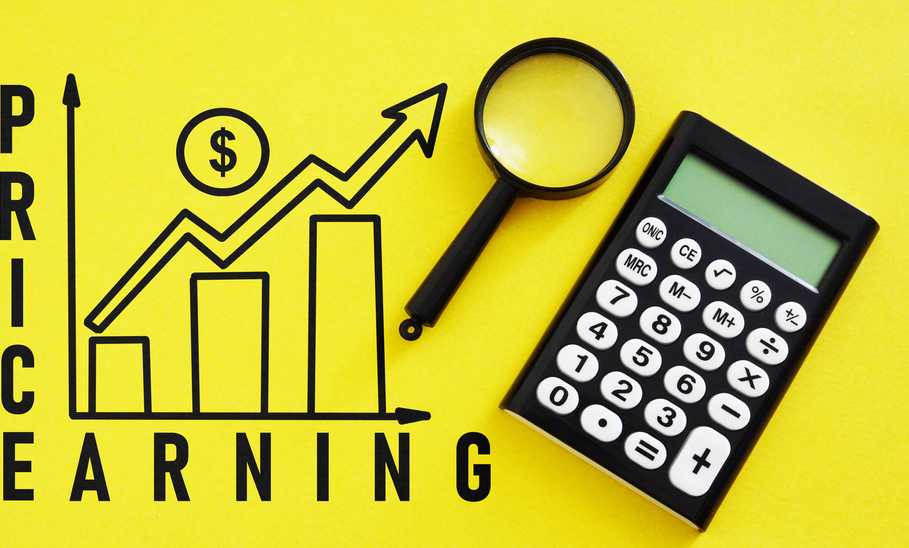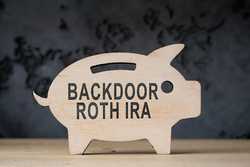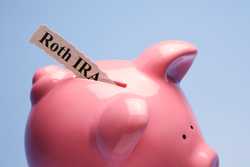What is a P/E ratio, And What Is Considered A Good One?

Our evaluations and opinions are not influenced by our advertising relationships, but we may earn a commission from our partners’ links. This content is created by TIME Stamped, under TIME’s direction and produced in accordance with TIME’s editorial guidelines and overseen by TIME’s editorial staff. Learn more about it.
When looking at stocks, there are different tools you can use to evaluate whether something is a good choice for your portfolio. One tool is the price-to-earnings or P/E ratio.
The P/E ratio can help you figure out how an individual stock is doing compared to others in its market sector and provide you with insights into when it might be a good value or when it’s potentially overpriced.
At its most basic, the P/E ratio expresses the relationship between a company’s share price and its earnings per share (EPS). It’s a way to evaluate the price you pay for a company’s current or future earnings. With the help of P/E ratio, you can determine whether a company is overvalued or a good bargain.
However, it’s important to note that there are different types of P/E ratio. For the most part, you have a type that looks behind, at the latest EPS, or one that looks at projected EPS based on analyst information and research.
Additionally, knowing a company’s P/E ratio is usually most helpful when you compare it to similar companies in the same market sector. You can also use the P/E ratio to compare whether a company has improved in value over time, or look at the company’s place in the market, based on its performance against a benchmark, such as the S&P 500.
Here’s a basic example of a P/E ratio. Let’s say company XYZ has a current price of $50 per share. The latest EPS report shows $2.50. You divide the current price by the EPS to get:
50/2.50 = 20
This means that company XYZ’s stock trades at a premium that amounts to 20 times greater than its earnings. When looking at this number without comparing it to another individual stock, a benchmark index or even the company’s own past performance, it might not be particularly meaningful.
However, let’s say that company XYZ is similar to other companies in the same sector, and that these companies usually have P/E ratios of between 10 and 15. When looking at a P/E ratio of 20, you can make one of two determinations:
When looking at price-to-earnings ratios, there are two main methods of calculation: forward and trailing.
Forward P/E is calculated using earnings projections. As a result, it might also be called estimated P/E. It’s a way of looking at what the earnings are expected to be and then calculating the P/E ratio based on that information.
However, there are some downsides to forward P/E. Sometimes companies temper their earnings projections so that, later, it looks as though they beat expectations. This can give you a less accurate picture of price-to-earnings as you attempt to make a decision.
Trailing P/E looks backward at previous performance. One popular way to figure trailing P/E is to take the last 12 months of total earnings per share. This offers a historical perspective, without relying on future estimates.
At the same time, using 12-month trailing P/E relies on historical performance that might not carry into the future. When using the P/E ratio, it’s important to understand the advantages and disadvantages of both types and consider using multiple factors when determining a company’s value in your portfolio.
The important function P/E ratio serves is to help investors determine whether a stock is overvalued or undervalued. Additionally, it can help investors compare a company’s performance to a benchmark index, or help rank it among companies in the same market sector.
Basically, it’s a way to see what other investors are willing to pay for each dollar of earnings. For example, if a company has a P/E ratio of 20, that means that investors are willing to pay $20 for every $1 in earnings.
When a company has a high P/E ratio, it might be considered overvalued, especially if that P/E ratio is high compared to similar companies or a market benchmark. On the other hand, if a company has a low P/E ratio, it could be a sign that a company is undervalued. If it’s undervalued, you might be able to get a good bargain.
But, there’s another way to look at it as well. A high P/E ratio might indicate that investors are willing to pay more for each dollar in earnings because they expect to be rewarded down the road.
The P/E ratio formula is pretty straightforward:
(Current share price / Earnings per share) = P/E ratio
Some investors take the latest 12-month EPS from a quarterly report, or they might just take the EPS from the last calendar year. Others take a look at forward EPS and use projected earnings as their denominator. No matter how you do it, though, it’s important to be consistent in your approach.
For example, let’s look at Amazon (AMZN).
Stock price, January 7, 2022: $162.55
Annual EPS, 2021: $3.24
So, we would take 162.44 / 3.24 = 50.14
In this example, investors would expect to pay $50.14 for every dollar in earnings.
In January 2021, however, the P/E ratio for the S&P 500 was 28.97. Compared to the benchmark, Amazon might be considered overvalued. Similarly, as of February 2021, Walmart, another large retailer, had a P/E ratio of 29.38. Again, with such a high P/E ratio in comparison to others, some investors might decide that Amazon was overvalued at the time.
Or, on the flip side, it might indicate that investors think that Amazon will do well because investors are willing to pay such a premium.
A “good” P/E ratio depends on the situation. In general, an investor might choose to look for a company that has a lower P/E ratio relative to similar companies or its benchmark index. Or, an investor might want to see a higher P/E ratio because there’s an expectation of potentially better results in the future. A good P/E ratio depends on an apples-to-apples comparison, and what, specifically, the investor is looking for.
When comparing individual stocks in the same sector, you can use the P/E ratio to get an idea of which might be a better value. For example, let’s look at Bank of America (BAC) compared to JPMorgan (JPM). For this example, we’ll use the closing stock price on March 17, 2023 and the annual EPS as of December 31, 2022.
When reviewing P/E ratio, you can see that both of these financial sector companies are fairly close to each other. You can see that JPM has a slightly higher P/E ratio, meaning that investors expect to pay a slightly higher rate for each dollar of earnings. They might also expect to see JPM bring higher earnings over time.
When comparing both BAC and JPM to a benchmark like the S&P 500, we might see something a little different. As of February 2023, the 12-month P/E ratio for the S&P 500 was 22.53. When looked at in that light, both of these companies appear to be undervalued relative to the market.
Or, another way to look at it is that neither of these companies are expected to perform as well as the market. Some investors might look at this difference and decide that these financial companies are likely to struggle in the near future and might want to hold off instead of trying to turn the situation into a buying opportunity.
There’s no foolproof way to use any investment analysis tool to perfectly find the right stocks for your portfolio. When using the P/E ratio, it’s important to note that earnings and share prices can change regularly, so you might see different results.
Additionally, if a company has negative EPS, you won’t get much use out of P/E ratio, since there isn’t a positive earnings number to use in your calculation. In general, the P/E ratio is only one tool you can use to evaluate stocks and whether you think they are a good fit for your portfolio.
If you decide to use a P/E ratio, it’s important to think about how you plan to move forward. Here are some things to keep in mind:
Generally, a lower P/E ratio can be an indication that a stock is undervalued relative to other companies in the same sector or relative to a benchmark. However, the P/E ratio isn’t foolproof. While it can be useful to make comparisons, it’s important to consider other measures as well. For investors who are new to analyzing financial ratios, seeking guidance from a trusted financial advisor from WiserAdvisor's platform can provide valuable insights into how to interpret these metrics and make informed investment decisions.
Basically, it means that investors are willing to pay $15 for every $1 in current earnings.
N/A in a P/E ratio indicates there isn’t enough information to create a P/E ratio. This could be because a company has a negative earnings for the time period indicated, or that a stock is recently listed and hasn’t had a chance to report earnings.
The earnings yield is inverse of the P/E ratio. You take the EPS and divide it by the stock price. Your earnings yield can help you understand your rate of return on an investment, but it’s not usually used as often as P/E ratio.
The PEG is the price/earnings-to-growth ratio. It’s determined by looking at the earnings today and expected growth in the future. The formula divides the P/E ratio by the growth rate of the earnings during a specified period. It can be used in conjunction with the P/E ratio to get a feel for the bigger picture.
Basically, the absolute P/E is what you see now. It’s a look at the current time period. Relative P/E is a way to compare P/E ratio over time to determine whether the stock has surpassed its past value.
The information presented here is created by TIME Stamped and overseen by TIME editorial staff. To learn more, see our About Us page.



